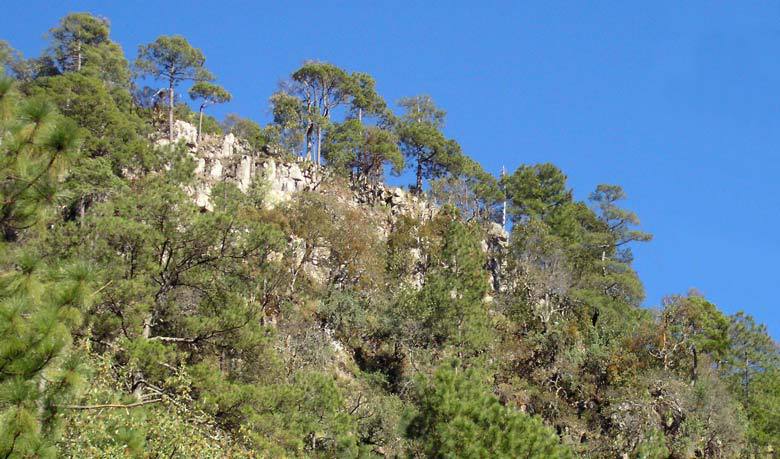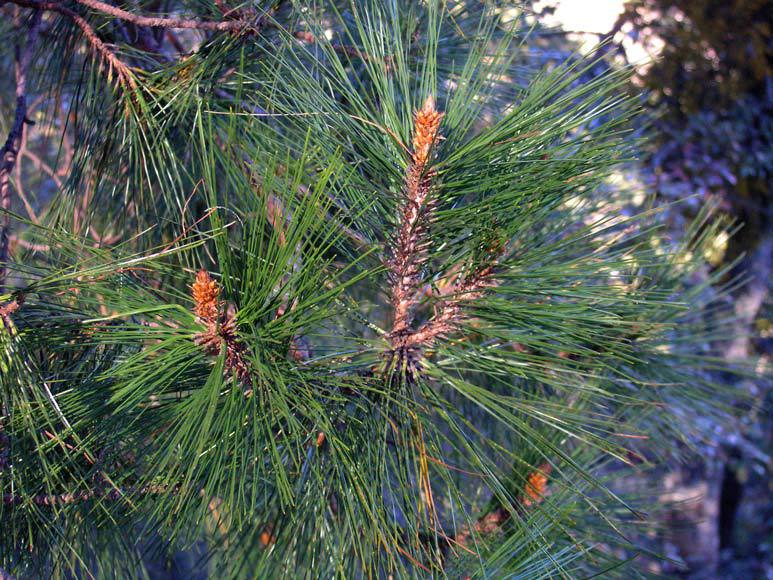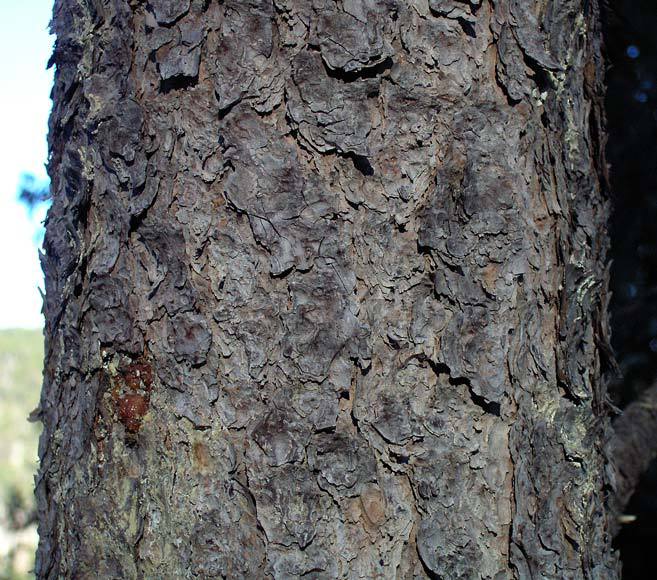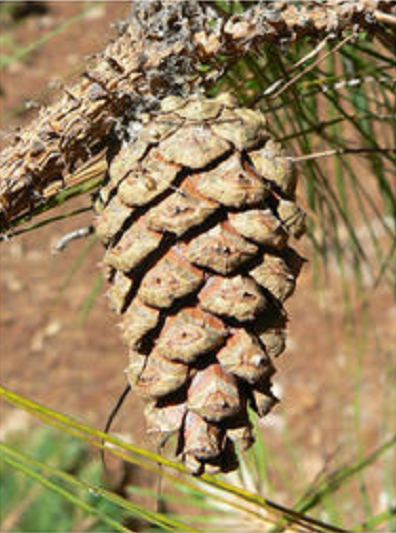subgenus Pinus, section Trifoliae (Duhamel), subsection Australes (Loudon).
Pinus herrerae, first described in 1940 by Maximino MartÃnez (1888-1964), is commonly known as Herrera pine, as well as pino chino is the Spanish language. The species name honors Mexican biologist, Alfonso Herrera, a colleague of Martinez at the Nationsl Autonomous University at Mexico City, Mexico.
Description. Herrera pine is an evergreen, coniferous species of tree that grows to mature heights of 80 to 120 feet (25 - 35 m) tall with a trunk up to 32 inches (80 cm) in diameter, measured at breast height and irregular crown on young trees, becoming rounded and open on mature trees with horizontal to drooping branches.
- Bark is thin, scaly, red-brown in color; with age, becoming thicker, divided by longitudinal fissures into red-brown, scaly plates.
- Branchlets are colored red-brown, smooth to slightly scaly in texture with decurrent cataphylls.
- Foliar buds are 0.32 to 0.6 inch (8 - 15 mm) long and are not resinous.
- Leaves (needles) grow in fascicles of 3, light- to yellowish green in color, measure 4 to 7 inches (10 - 20 cm) long, with slender, flexible, mostly erect but with occasionally somewhat drooping habit. Needle margins are finely serrate, bearing lines of stomata on all sides.
- Fascicle sheaths are persistent, measuring 0.16 to 0.56 inch (8 - 14 mm) long, colored pale brown.
- Seed cones are long-ovoid shaped, almost symmetrical, comprised of 25 to 85 seed scales, measuring 0.8 to 1.2 inches (2 - 4 cm) long, growing reflexed on stout peduncles about 0.2 inch (5 mm) long. They are colored light brown, opening when mature, and deciduous soon after shedding seed.
- Cone scales are 0.2 to 0.24 inch (5 - 6 mm) wide, flexible, with a flat to slightly raised, lightly keeled apophysis, umbo is slightly raised with a small, early-deciduous prickle.
- Seeds measure 0.12 to 0.16 inch (3 - 4 mm) long, colored dark brown, with an articulate wing, 0.2 to 0.28 inch (5 - 7 mm) long.
Distribution. This species is native to Mexico - Sinaloa, Durango, Jalisco, Michoacan, Guerrero; possibly in other areas. Grows at elevations of 4,000 to 8,000 feet (1,200 - 2,400 m) above sea level, generally on moist, well-drained slopes where yearly rainfall measures 36 to 48 inches (900 - 1,200 mm).
Hardy to USDA Zone 10 - cold hardiness limit between 30° and 40°F (-1° and +4.4°C).



